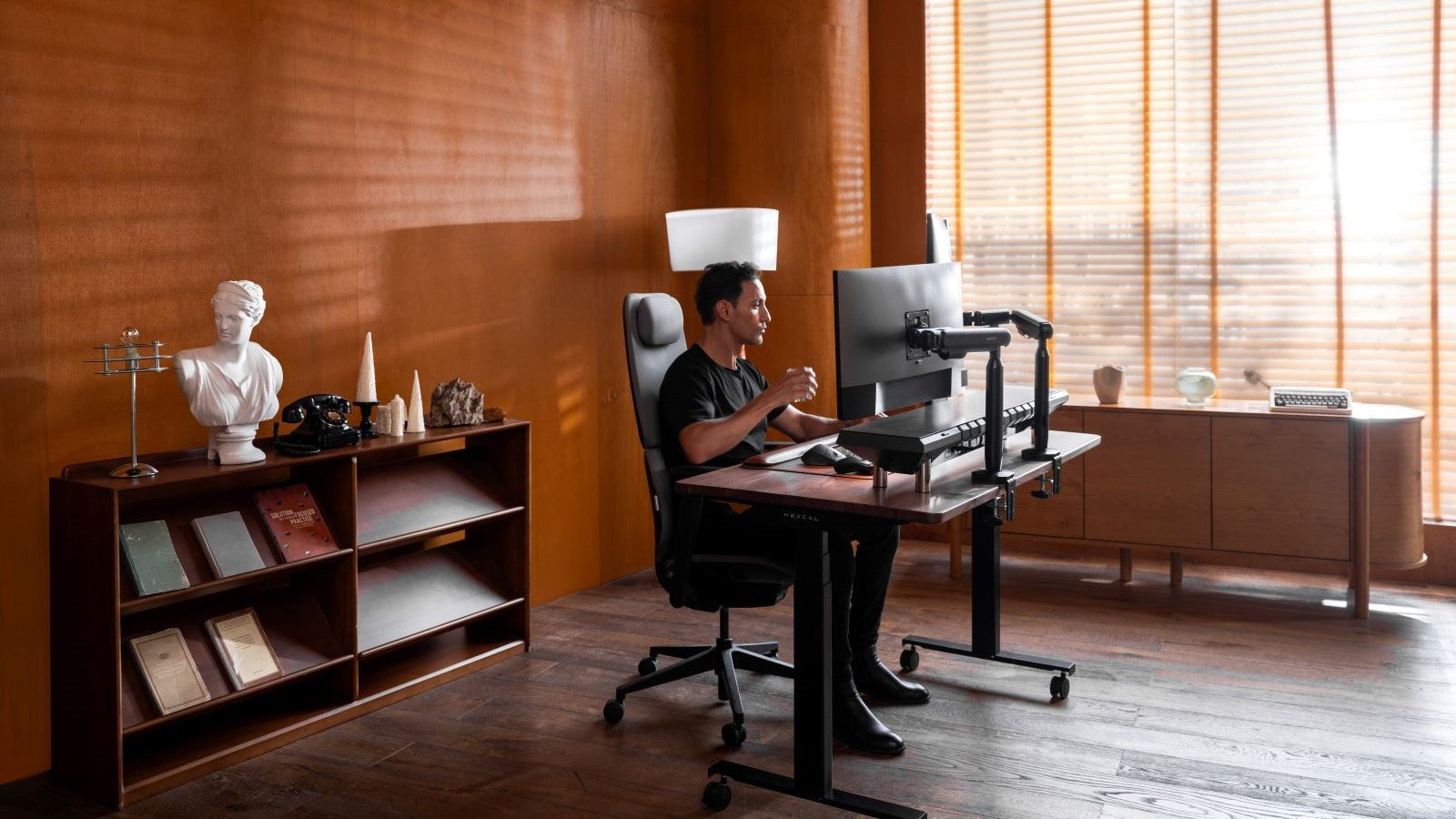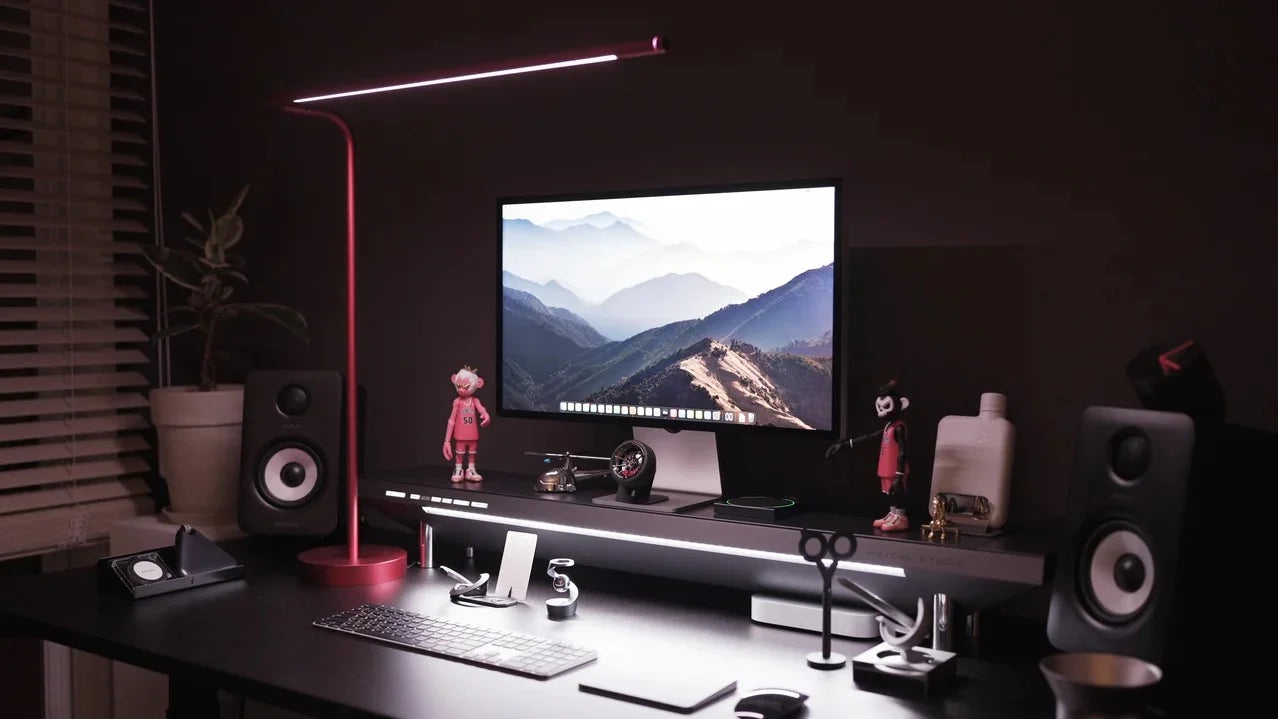Introduction
Choosing a desk isn’t just about style or what fits in your space—it’s about how your workspace supports your daily habits, health, and focus. Whether you're building a home office, revamping your company setup, or simply trying to improve how you work, your desk plays a big role in how you feel and perform throughout the day.
This guide breaks down the core differences between standing desks and traditional desks—not to sway you in one direction, but to help you make an informed choice based on your needs, routine, and lifestyle. Whether you're an office worker, remote employee, student, creative, or someone who values ergonomic design, understanding what works best for you is the first step toward a better workspace.
Ergonomics & Health Considerations
How you sit—or stand—at your desk has a direct impact on your comfort, posture, and long-term health. Let's look at how each desk type supports (or challenges) your physical well-being.
Standing Desks: Encouraging Natural Movement
- Promotes better posture: When properly adjusted, a standing desk supports a neutral spine, reducing the tendency to slouch. This can alleviate tension in the neck, shoulders, and lower back.
- Improves circulation and energy: Standing encourages small movements throughout the day, which can help boost blood flow and reduce feelings of fatigue.
- Supports an active routine: For those who struggle with sitting for long periods, an adjustable desk makes it easier to stay moving without interrupting work.
However, standing for too long—especially without proper footwear, an anti-fatigue mat, or a supportive setup—can lead to discomfort in the knees, feet, and joints. Like sitting, standing needs to be done mindfully.
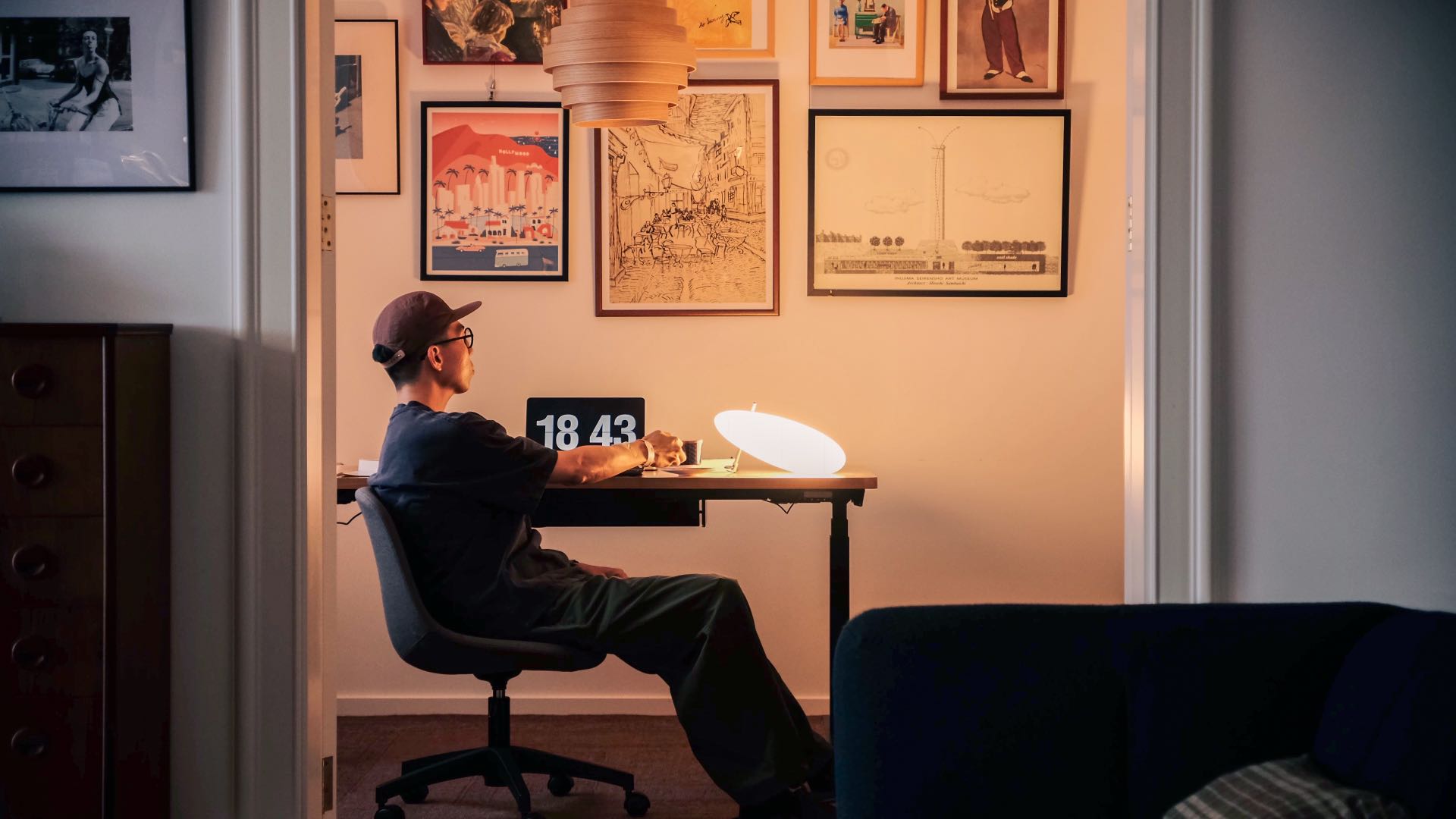
Traditional Desks: Comfort with Awareness
- Supports focused seated work: With the right ergonomic chair and posture habits, a traditional desk can be just as supportive. Many professionals prefer the stability and comfort of seated work, especially for tasks that require long periods of focus.
The challenge lies in awareness. Many users adopt poor posture over time—slouching, craning their neck, or sitting for too long without breaks—which can lead to common issues like lower back pain or stiffness.
Key Takeaway - Movement Matters Most: Neither desk is inherently better. What matters is how you use it. The healthiest work setups promote regular movement—whether that’s shifting between sitting and standing, or building in intentional breaks during a seated workflow. An ergonomic desk setup isn’t about staying in one position all day—it’s about staying aware and adaptable.
Impact on Productivity & Energy
Your desk doesn’t just affect your posture—it can also shape how alert, focused, and energized you feel during the day. Let’s explore how both standing and traditional desks influence your work output and mental clarity.
Standing Desks: Encouraging Alertness and Flow
- Helps fight off the "afternoon slump": Standing encourages more active movement, which keeps your blood flowing and energy levels more consistent throughout the day.
- Boosts mental engagement: Light physical activity, like shifting your weight or stretching while standing, can help you stay sharp—especially during long meetings or focused tasks.
- Supports flow for dynamic tasks: If your job involves creative work, calls, or brainstorming, standing may help generate a sense of momentum and openness.
However, standing all day doesn’t guarantee productivity. It’s not about the position—it’s about variation. Standing is most effective when it’s part of a rhythm, not a static substitute for sitting.
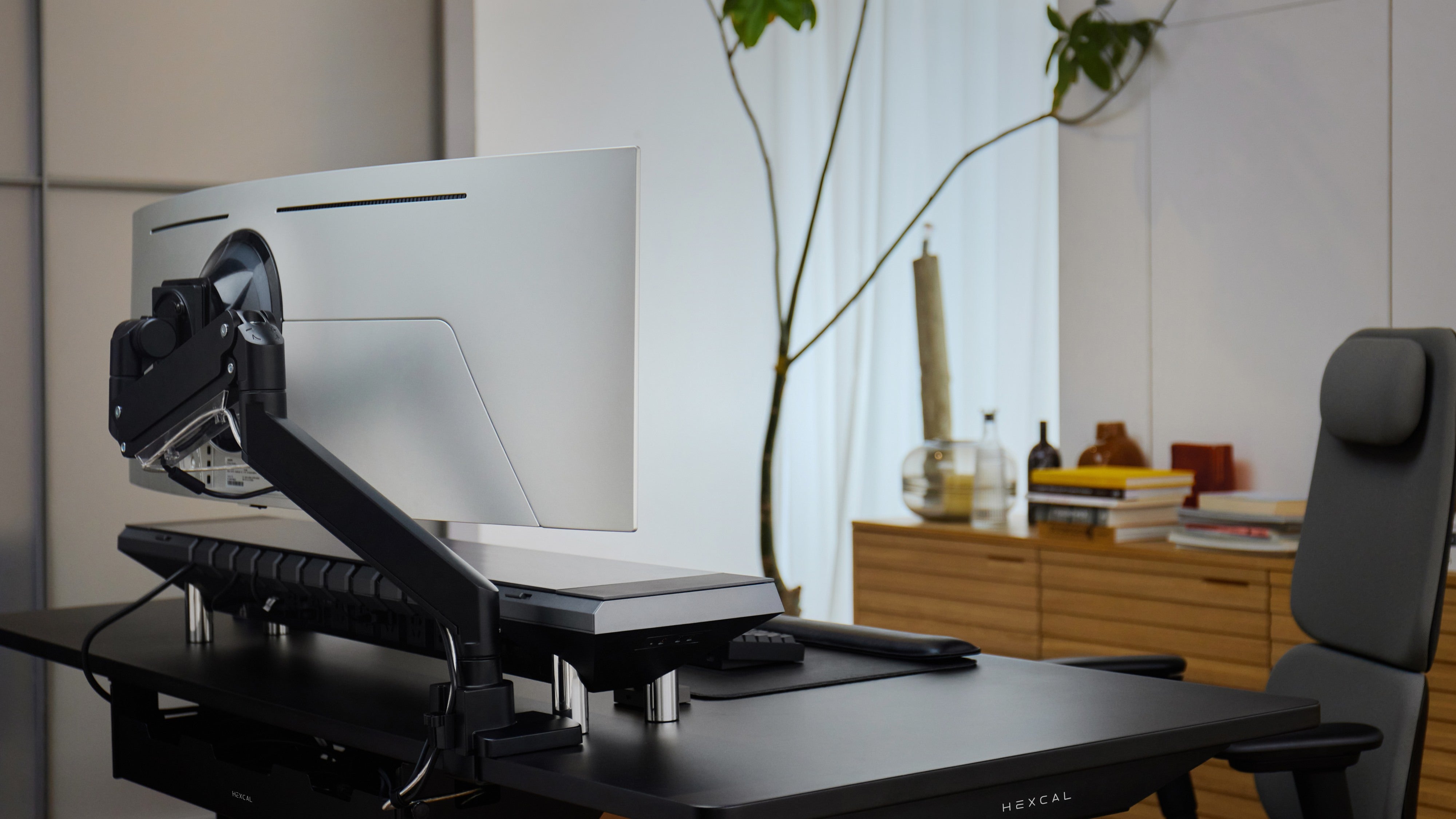
Traditional Desks: Stability for Deep Work
- Ideal for concentration-heavy tasks: Sitting can be better suited for tasks that require stillness and precision, like writing, analyzing data, or long periods of focused computer work.
- Less physical distraction: For some, standing introduces too much movement or discomfort, especially without the right setup. Sitting can reduce those variables and help maintain attention.
- Can be balanced with active breaks: If you're mindful of your posture and take regular breaks to stand, stretch, or move, a traditional desk can still support high energy and focus levels.
Why Alternating Is Key: The most effective productivity strategy? Mix it up. Alternating between sitting and standing—or simply incorporating natural movement into your workday—helps reduce fatigue, prevent restlessness, and support sustained focus.
Whether you're on a standing desk or a traditional one, the real advantage lies in balance: Know when to move, when to sit, and when to recharge.
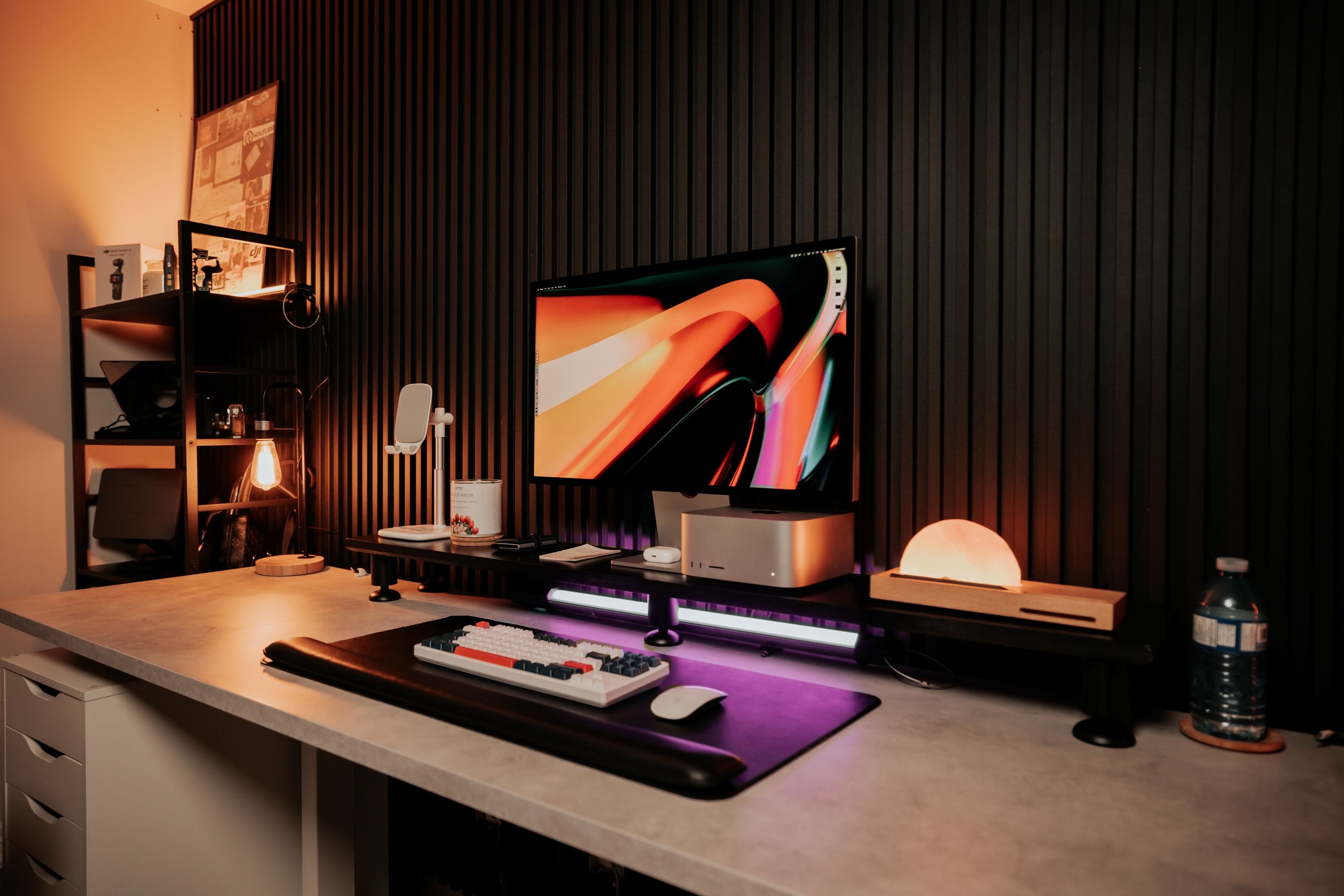
Value Assessment
Choosing a desk is both a practical and financial decision. While it’s easy to focus on upfront cost, it’s also worth thinking about long-term value—how a desk impacts your comfort, health, and ability to work well over time.
Standing Desks: Higher Cost, Long-Term Payoff
- Typically a higher investment: Standing desks—especially adjustable or motorized ones—often cost more upfront due to the technology and materials involved.
- Potential return through improved well-being: For those who struggle with back pain, low energy, or stiffness from long hours of sitting, the investment may be worthwhile. Feeling better often leads to higher focus, better work output, and fewer interruptions.
- Affordable solutions exist: While premium models offer advanced features and sleek designs, there are standing desks available at various price points—including entry-level options with manual height adjustment.
A standing desk isn’t essential for everyone, but it can be a valuable tool if it fits your lifestyle, budget, and goals. For people dealing with discomfort from prolonged sitting, the benefits of a standing desk may go far beyond what’s visible on the surface.
Traditional Desks: Budget-Friendly, With Considerations
- Lower upfront cost (with some exceptions): Traditional desks are widely available and often more affordable than adjustable models, especially if you already own one or can repurpose an existing table. However, premium or custom-built traditional desks can cost as much—or even more—than entry-level standing desks.
- Can be optimized with accessories: Pairing a traditional desk with an ergonomic chair, monitor riser, or footrest can significantly improve comfort without needing to buy a new desk.
- Potential hidden costs: Over time, extended periods of sitting—especially with poor posture—can contribute to discomfort, lost productivity, or even physical strain. In some cases, you may end up investing in additional accessories (or healthcare solutions) later on.
Bottom Line: Make the Most of What You Have: Value isn’t just about price—it’s about how your setup supports your daily habits. A standing desk may offer more built-in flexibility, but a traditional desk paired with smart habits and the right accessories can be just as effective, especially for those who take regular breaks and stay posture-aware.

Design & Workspace Integration
A desk isn’t just functional—it’s part of your environment. Whether you're going for clean minimalism or cozy creativity, your desk should blend with your space while supporting your workflow. Let's explore how standing and traditional desks differ in design, and how to optimize either style.
Standing Desks: Clean, Modern, and Adaptable
- Minimalist appeal: Standing desks often feature streamlined profiles that elevate the aesthetic of a modern workspace. They naturally encourage decluttering, which helps promote mental clarity and focus.
- More vertical flexibility: The ability to raise or lower the desk gives your room visual versatility—it can open up tight spaces or accommodate different users comfortably.
- Optimized for modular setups: Many standing desks work well with accessories that reduce visual and physical clutter.
Traditional Desks: Timeless and Versatile
- Broader design range: From classic wood finishes to compact modern styles, traditional desks offer a wide selection of shapes, colors, and materials to suit your taste.
- Built-in storage: Many include drawers or shelving for organization. While convenient, these features can reduce under-desk space, which may affect legroom or accessory placement.
- Better suited to larger layouts: Traditional desks may take up more floor space, especially when paired with larger chairs and footrests.
Choose Based on Your Aesthetic & Workflow: Whether you're working with a minimalist home office or a more eclectic space, your desk should reflect both your style and how you like to work. If you're seeking a modern, organized setup with dynamic features, a standing desk with integrated accessories like those from Hexcal can offer powerful advantages. But if you prefer a classic layout with a cozy, seated focus, a traditional desk setup—with thoughtful add-ons—can absolutely work just as well.
Space & Setup Considerations
How much room you have—and how you organize it—plays a big role in choosing the right desk and creating an effective ergonomic workspace.
Standing Desks: Efficient and Streamlined
- Smaller footprint: Because standing desks don’t require a permanent chair space, they often fit better in compact rooms or shared spaces.
- Integrated cable management: Many adjustable desks come with built-in features like cable routing ports or trays to keep cords neat, reducing clutter and distractions.
- Flexibility with accessories: Using a monitor arm can lift screens off the desk surface, freeing valuable space and allowing you to position your monitors ergonomically.
- Stability considerations: Some standing desks may have slight wobble when fully extended, especially with heavy equipment. Choosing a robust, well-built model is key for steady performance.
Traditional Desks: Room to Relax and Settle In
- Requires space for seating: Traditional desks need enough room for an ergonomic chair and often a footrest, making them better suited for larger or dedicated office areas.
- Cable management challenges: Without built-in solutions, cords can accumulate under and around the desk, necessitating external organizers or sleeves.
- Storage advantages: Drawers and shelves add convenience but can limit legroom or the ability to add certain ergonomic accessories.
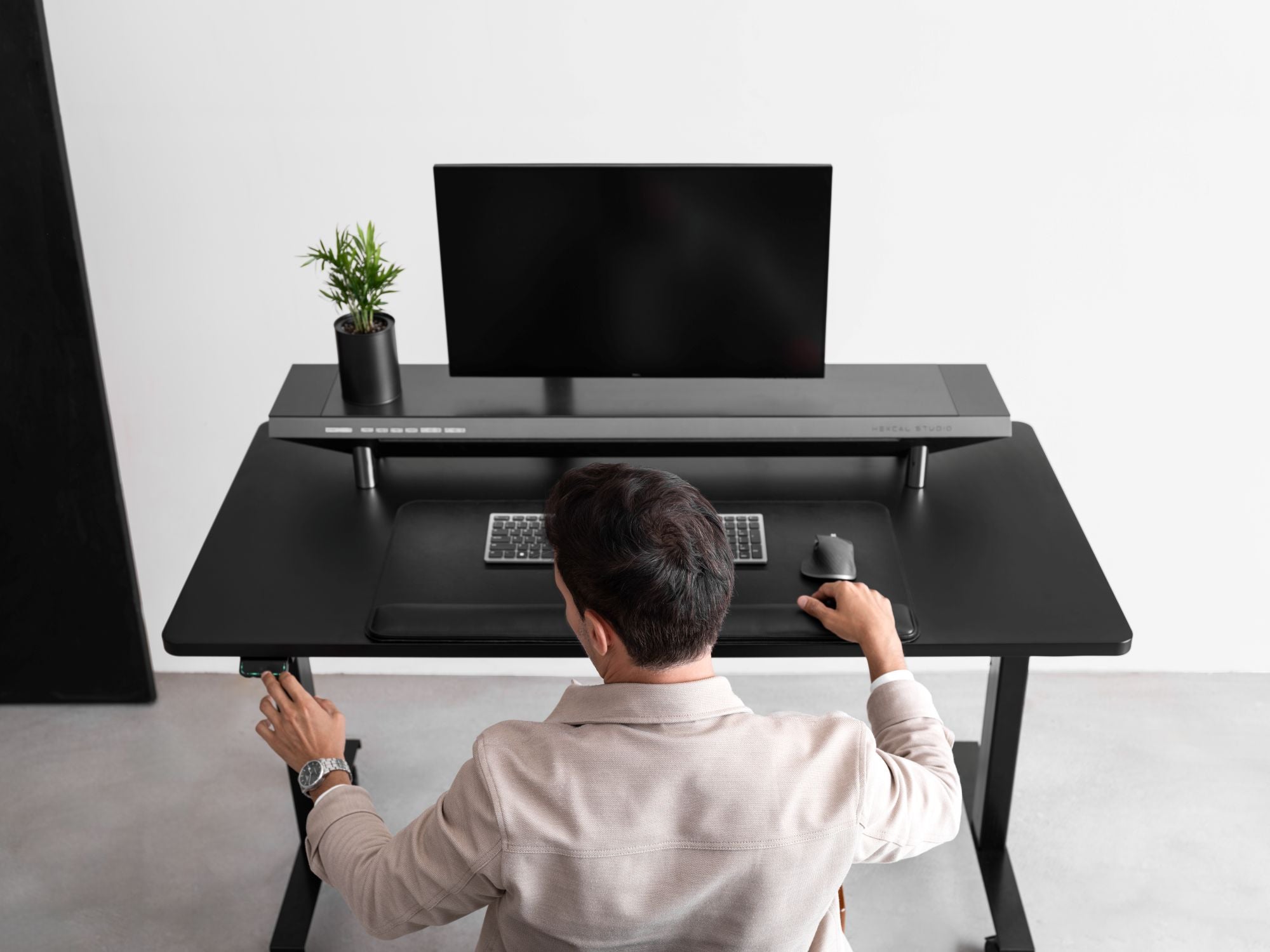
Tips for Optimizing Your Workspace
- Measure your space carefully before choosing your desk to ensure it fits comfortably without crowding.
- Assess your equipment—number of monitors, keyboard, mouse, and other peripherals—to determine how much surface area you need.
- Plan for accessories like monitor arms, cable organizers, or under-desk trays to keep your setup tidy.
Making Your Decision: Which Desk is Right for Your Lifestyle?
Choosing the right desk depends on your work habits, comfort needs, and budget. Here’s some guidance to help you find the best fit:
- Health-Conscious Professionals & Remote Employees: If you spend long hours seated with limited movement, an adjustable desk can encourage healthy posture changes and boost circulation. But if you take regular breaks and maintain good posture, a traditional desk can also support your well-being.
- Students: With typically shorter study sessions and more frequent breaks, a traditional desk is often a practical and affordable option. However, for those who spend extended hours studying in one place, a sit-stand solution may help reduce physical strain.
- Creatives & Ergonomics Enthusiasts: Those seeking flexibility and customization may benefit from an adjustable desk combined with ergonomic accessories like monitor arms, quality chairs, and anti-fatigue mats.
- Budget-Conscious Individuals: A traditional desk, combined with posture awareness and affordable ergonomic add-ons, can provide comfort without major investment. Entry-level standing desks are also increasingly available, offering flexibility for those who want to try alternating between sitting and standing.
- When a Traditional Desk Might Be Best: If your work demands focused seated tasks and you commit to posture awareness and movement breaks, a traditional desk can meet your needs effectively. The key is avoiding long, uninterrupted periods of sitting.
The best desk supports your movement, comfort, and workflow—whether it’s standing, sitting, or alternating between the two.
Conclusion
Choosing between a standing desk and a traditional desk is less about which is “better” and more about what fits your lifestyle, workflow, and comfort needs. Both options can support a healthy, productive workspace when used thoughtfully.
If your work involves long periods of sitting without breaks, an adjustable standing desk might offer significant benefits by encouraging movement and better posture. On the other hand, if your routine includes frequent breaks and you maintain good seated posture, a traditional desk paired with ergonomic accessories can serve you well without the need for a major investment.
Ultimately, the best ergonomic desk setup is one that empowers you to move, adapt, and work comfortably—whether sitting, standing, or a mix of both.
FAQ
The key is regular movement. Avoid staying in one position—sitting or standing—for prolonged periods. Listen to your body and alternate based on comfort and task demands.
Most people can benefit from a standing desk’s flexibility. However, if you have specific health conditions, consult a professional. New users should ease into standing gradually.
For standing: Elbows should be at about a 90-degree angle with forearms parallel to the floor, and your monitor’s top edge at or slightly below eye level. For sitting: Feet flat on the floor, knees at a comfortable angle, and forearms parallel to the desk surface.
Consider an anti-fatigue mat for comfort, a monitor arm to free desk space and improve ergonomics, a quality ergonomic chair for seated breaks, and cable management tools to keep your workspace tidy.
Neither sitting nor standing exclusively is inherently better. The healthiest approach is to balance both by alternating positions throughout the day and incorporating regular movement. This helps reduce strain and keeps you energized.
A standing desk can offer health benefits like improved posture and increased movement, but it’s not a one-size-fits-all solution. Its effectiveness depends on how you use it—standing too long without breaks can cause fatigue, so combining sitting, standing, and movement is key.



